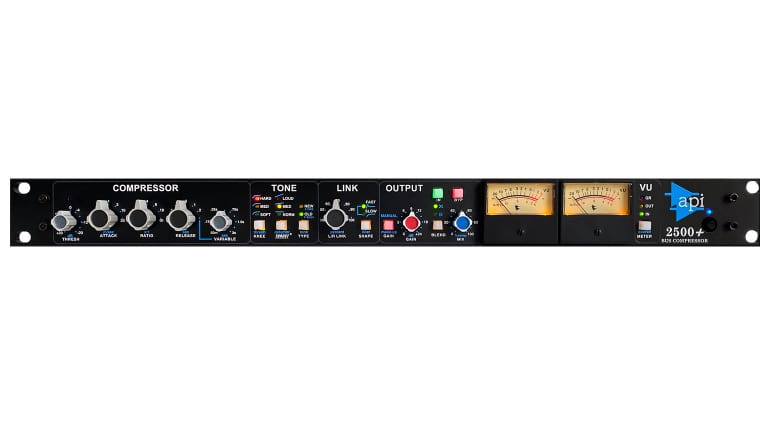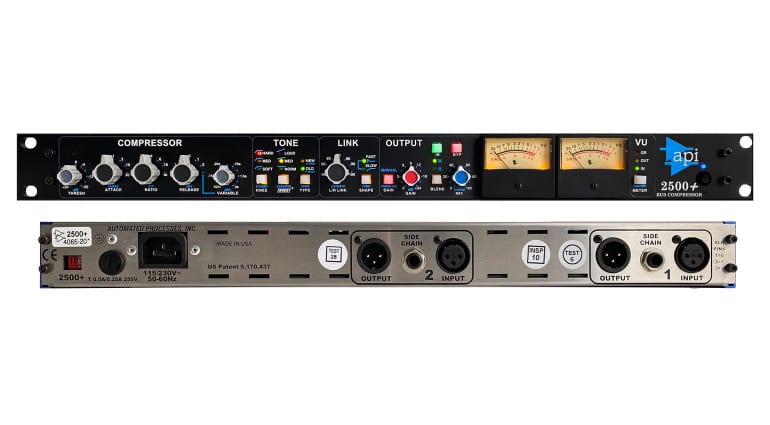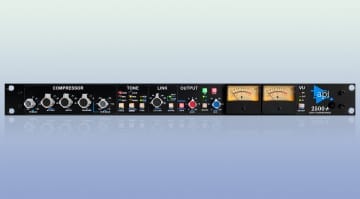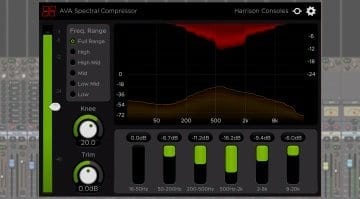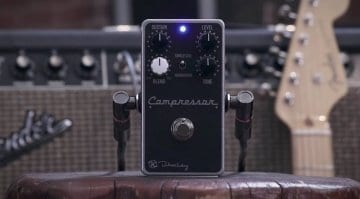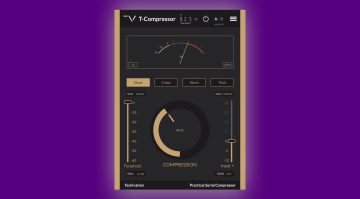API introduces the 2500+ bus compressor with parallel compression
API has given its famed bus compressor an overhaul. 18 years after the introduction of the API 2500, the new 2500+ adds several user-requested features, including a blend/mix circuit for parallel compression.
API 2500+ stereo bus compressor
Last year, API celebrated its 50th anniversary with a limited run of the 2500 in a gold 2U chassis. The limited edition is now sold out, but the company has just announced the next evolutionary step of the 2500. The new 2500+ stereo bus compressor arrives in a more traditional 1U chassis, while featuring the same enhancements as the anniversary edition.
The main improvement over the classic 2500 is of course the Blend/Mix circuit. According to API, it offers cross-fader or parallel mixing of the compressed and uncompressed signals. In cross fading mode, the mix control lets you adjust the balance from 100% uncompressed to 100% compressed, with one signal being reduced in volume as the other is increased. Parallel mode blends the compressed signal into the uncompressed signal, whose volume remains the same.
The blend/mix feature provides an easy way to accomplish parallel compression, which is a great thing to have on a bus compressor and seems like a logical evolution of the classic 2500.
API has also implemented an expanded threshold range of +20 dB to -20 dB (compared to +10 dB to -20 dB on the 2500), and given the 2500+ a bit more headroom at the output, which clips at +32 dBu (previously: +28 dBu).
Other than that, the 2500+ remains the same as its predecessor, which isn’t a bad thing at all considering the 2500’s success and impact. The compressor still features API 2520 op amps. All of the 2500’s signature features are still the same, including the THRUST filter before the RMS detector (for a punchy bottom end), and the option to choose from old “feed back” API-525-style compression or new “feed forward” compression.
Price and availability
According to the API website, the MSRP of the 2500+ is USD 3295. That’s exactly the same as the 2500, which suggests that the 2500+ will replace the original 2500 for good. There’s no word yet on when the 2500+ will become available.
 1,0 / 5,0 |
1,0 / 5,0 | 